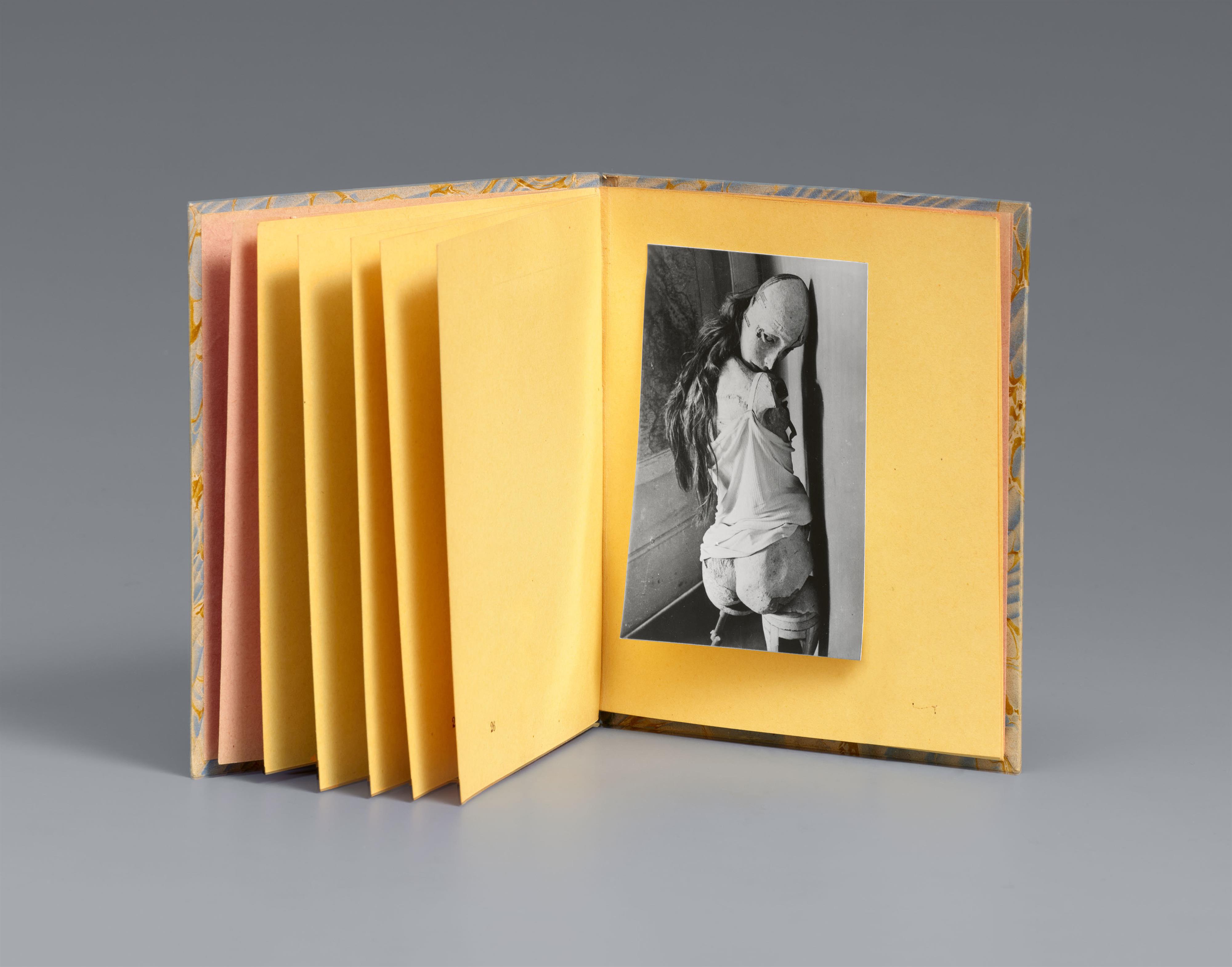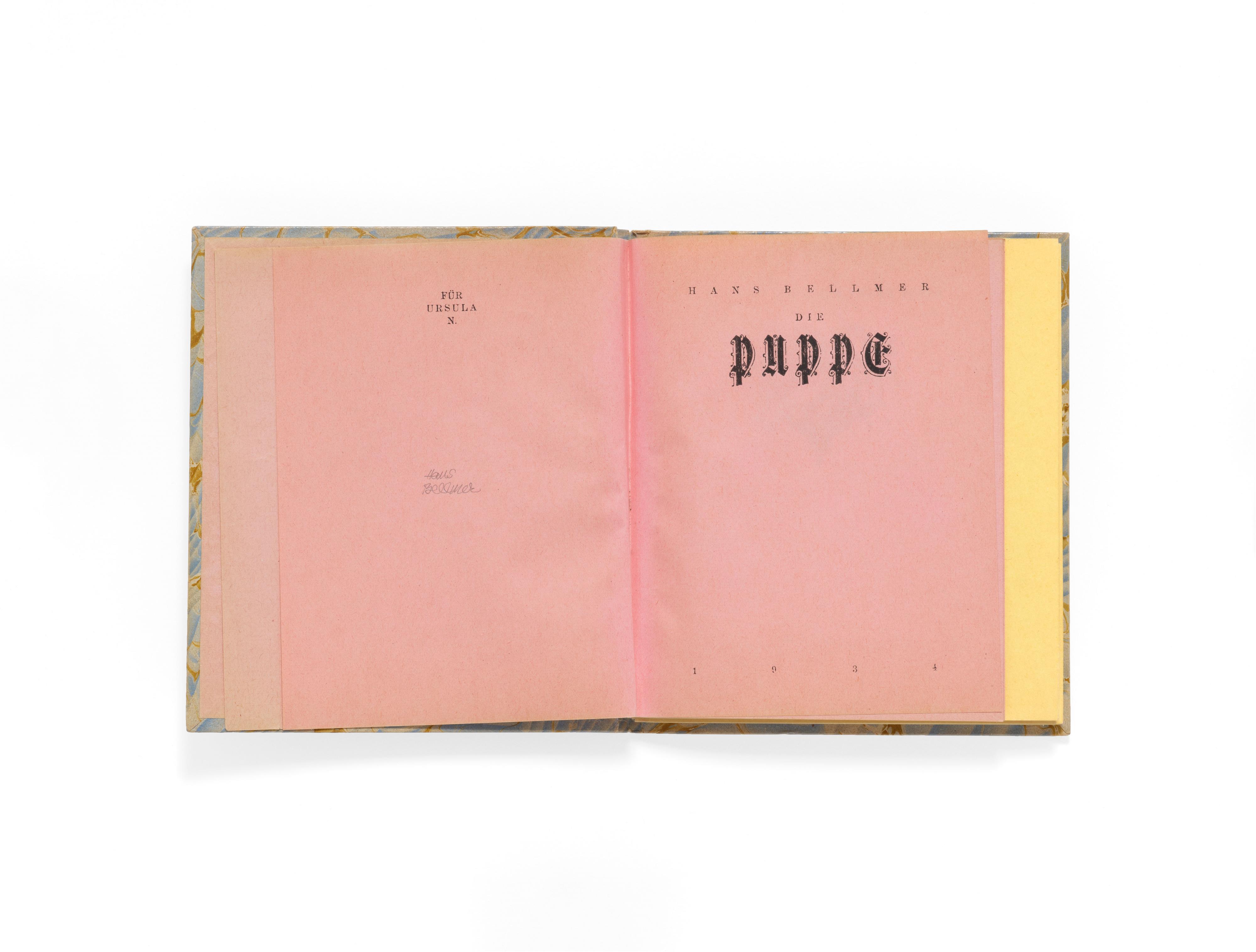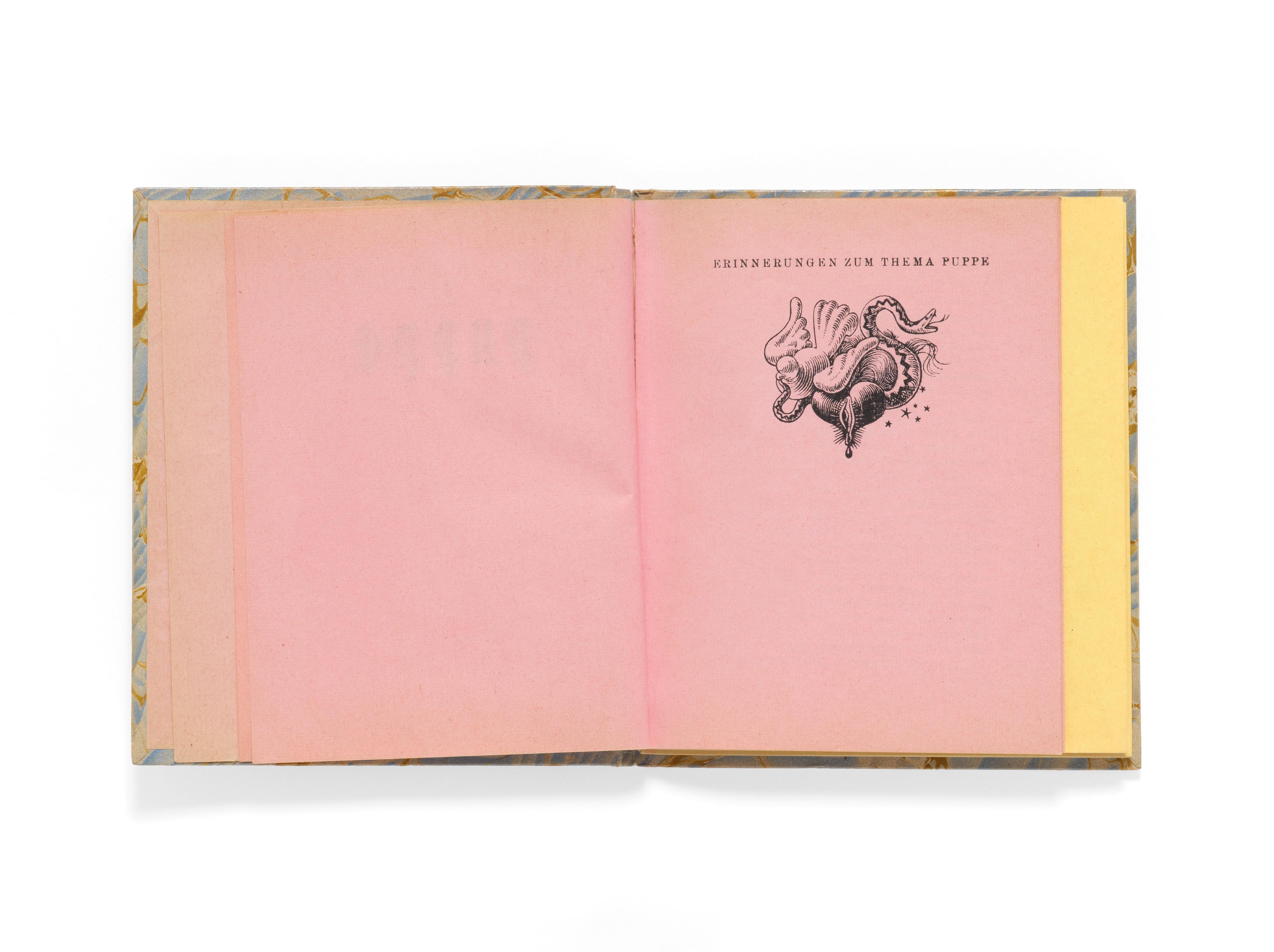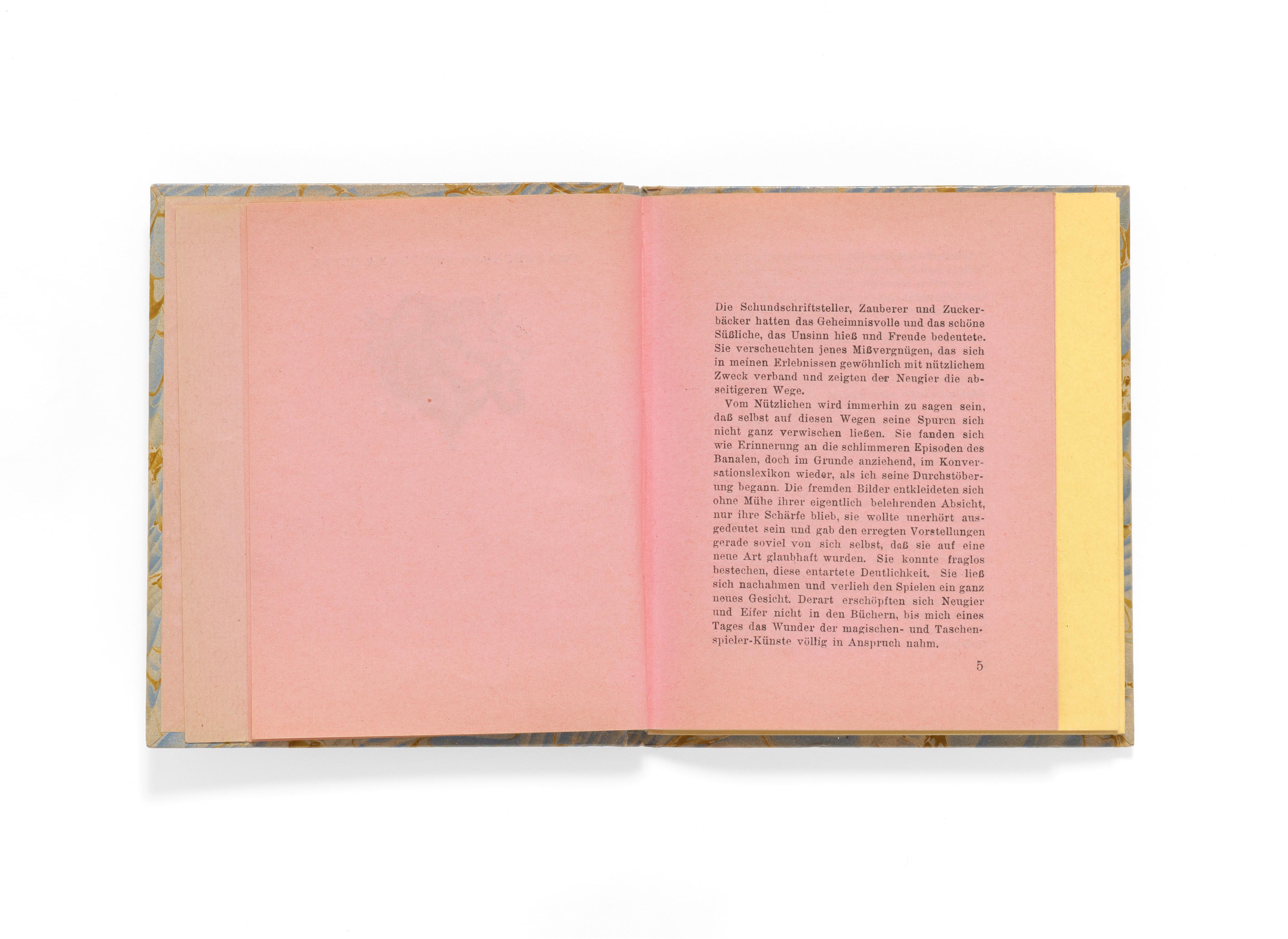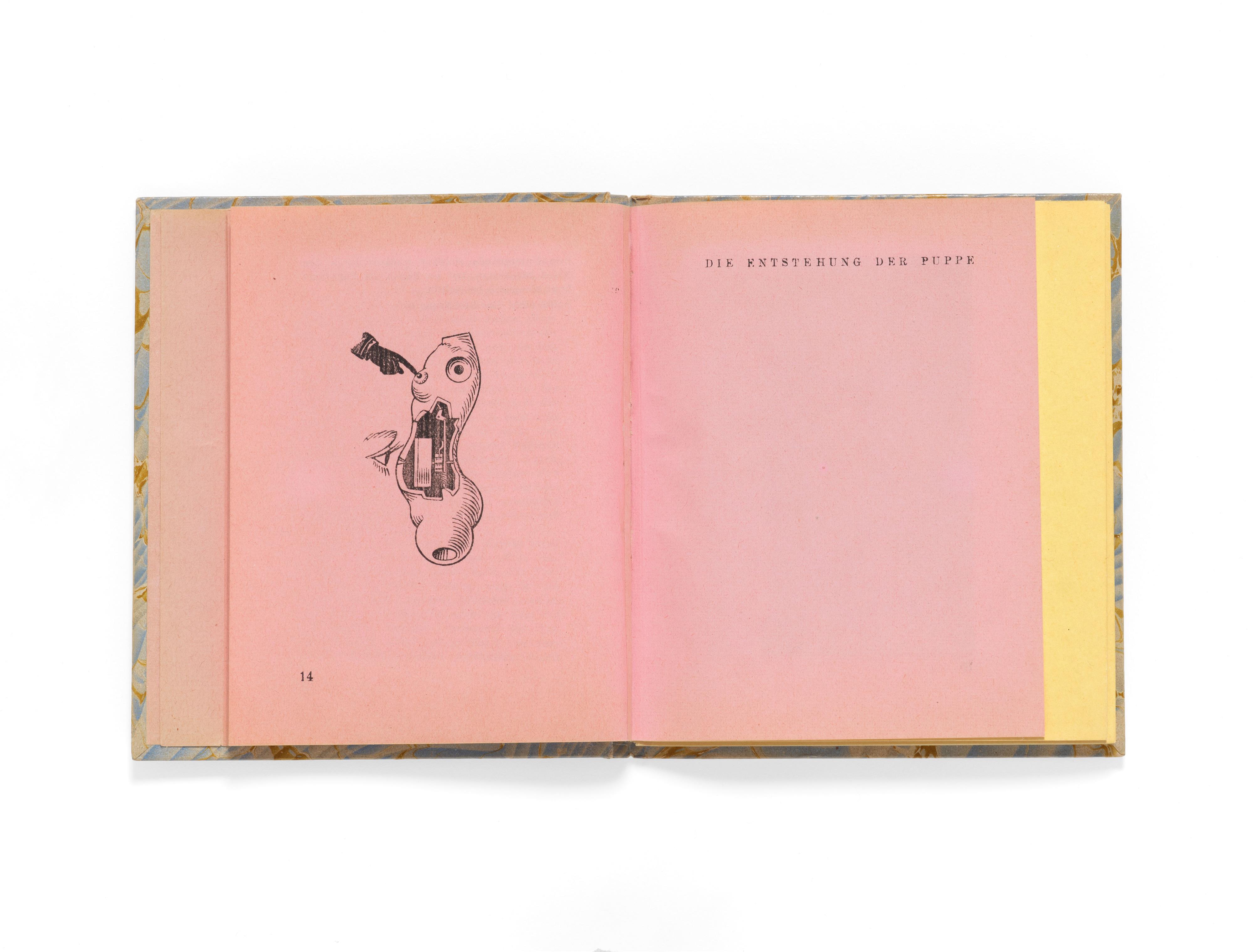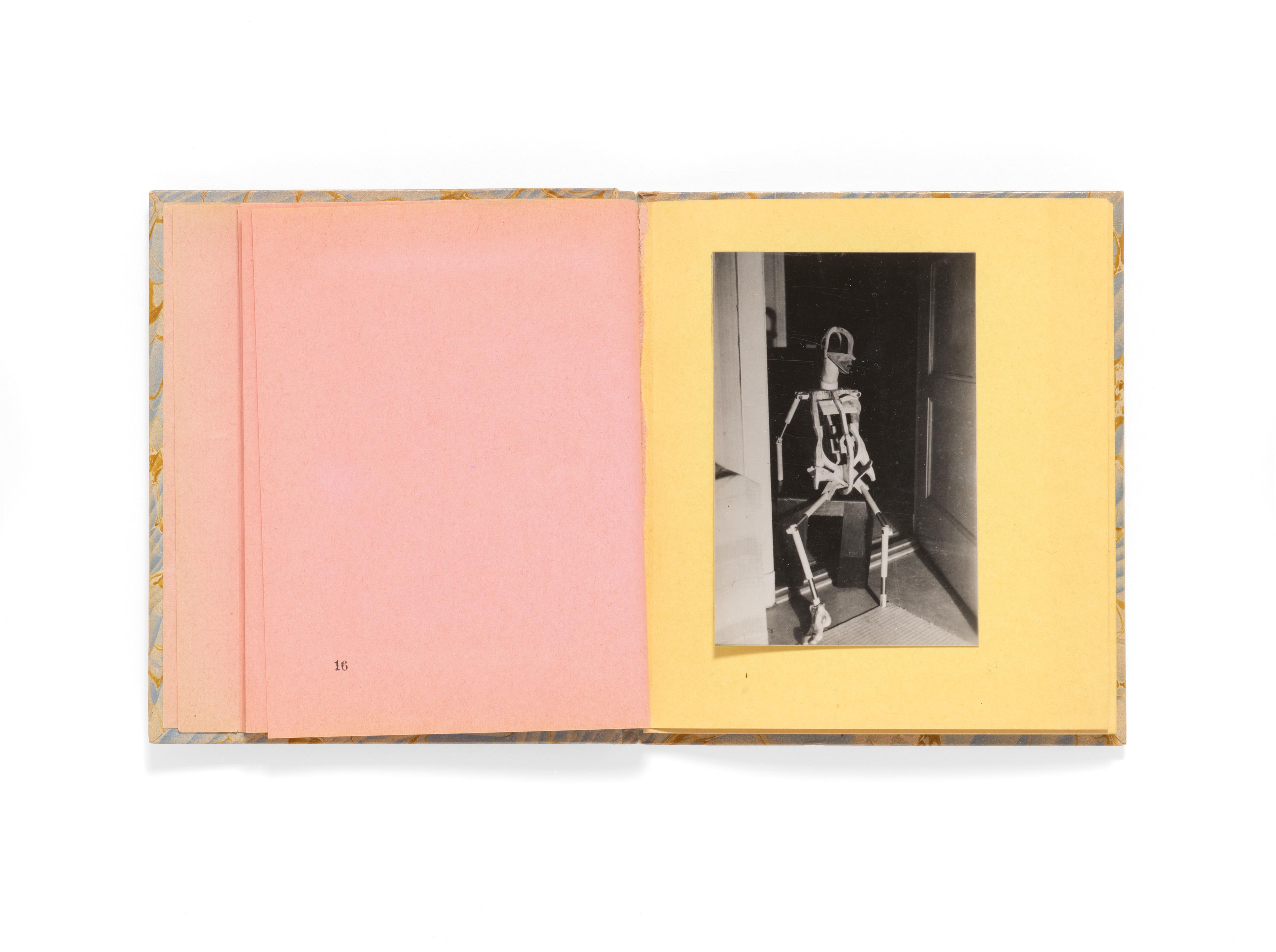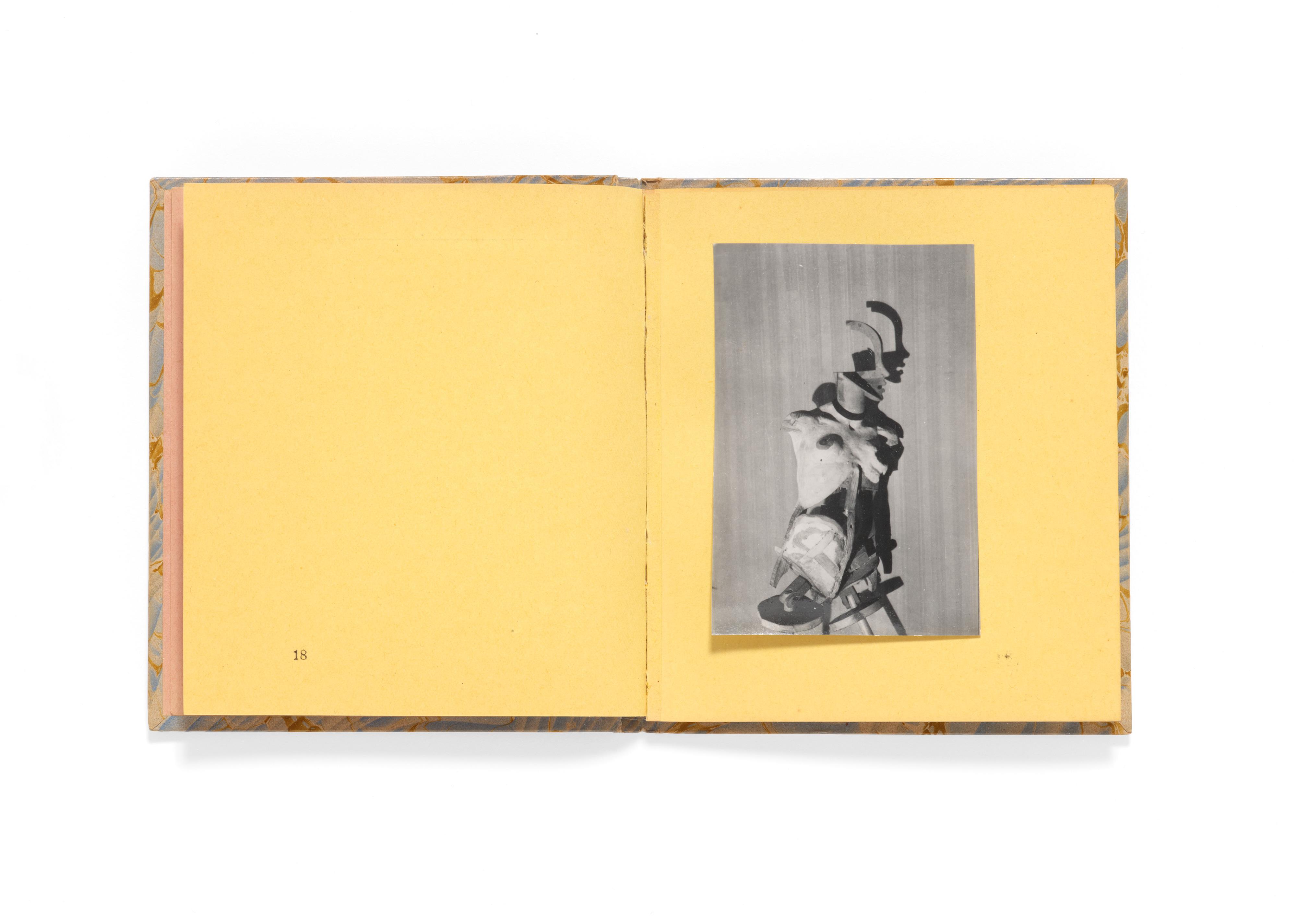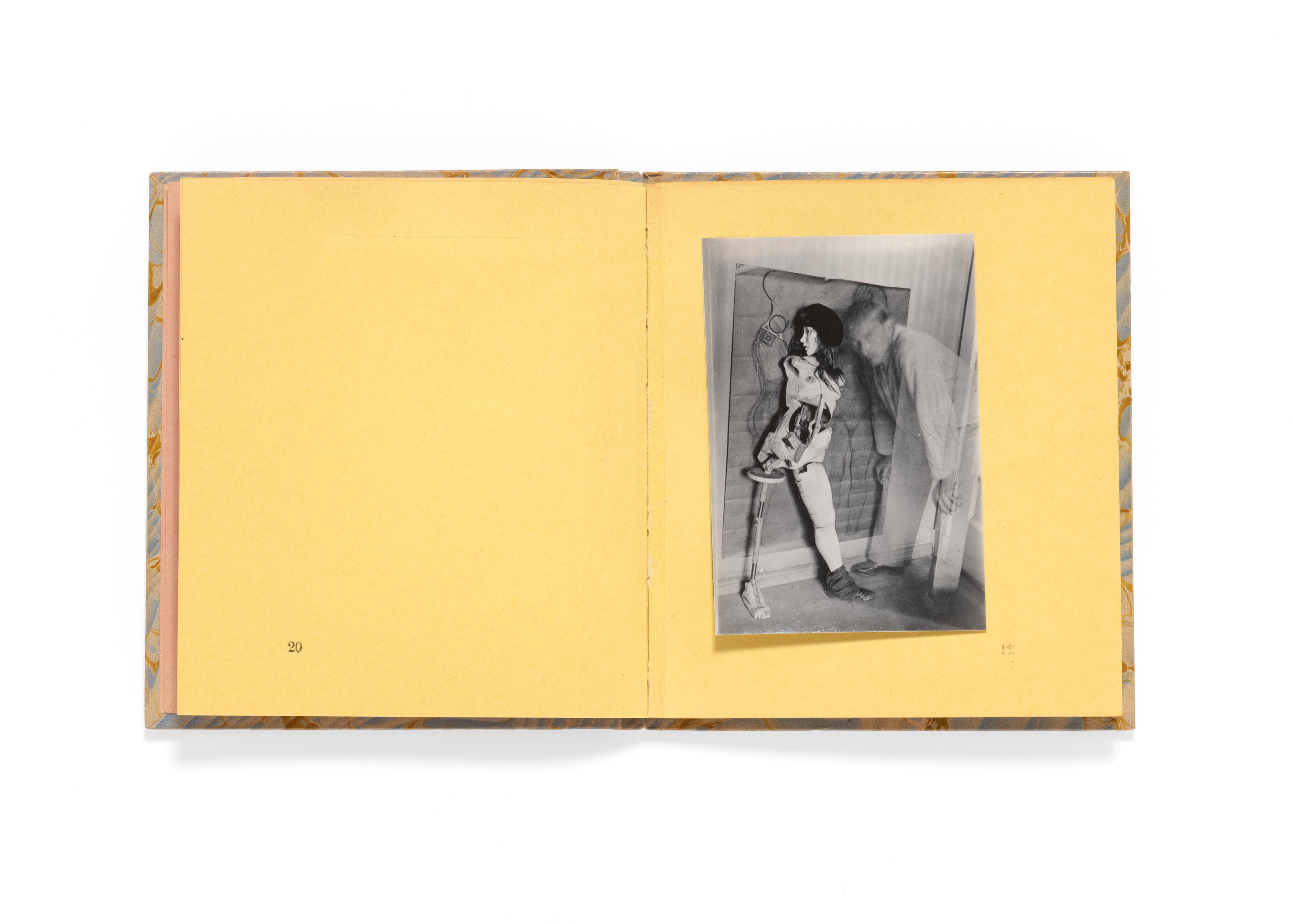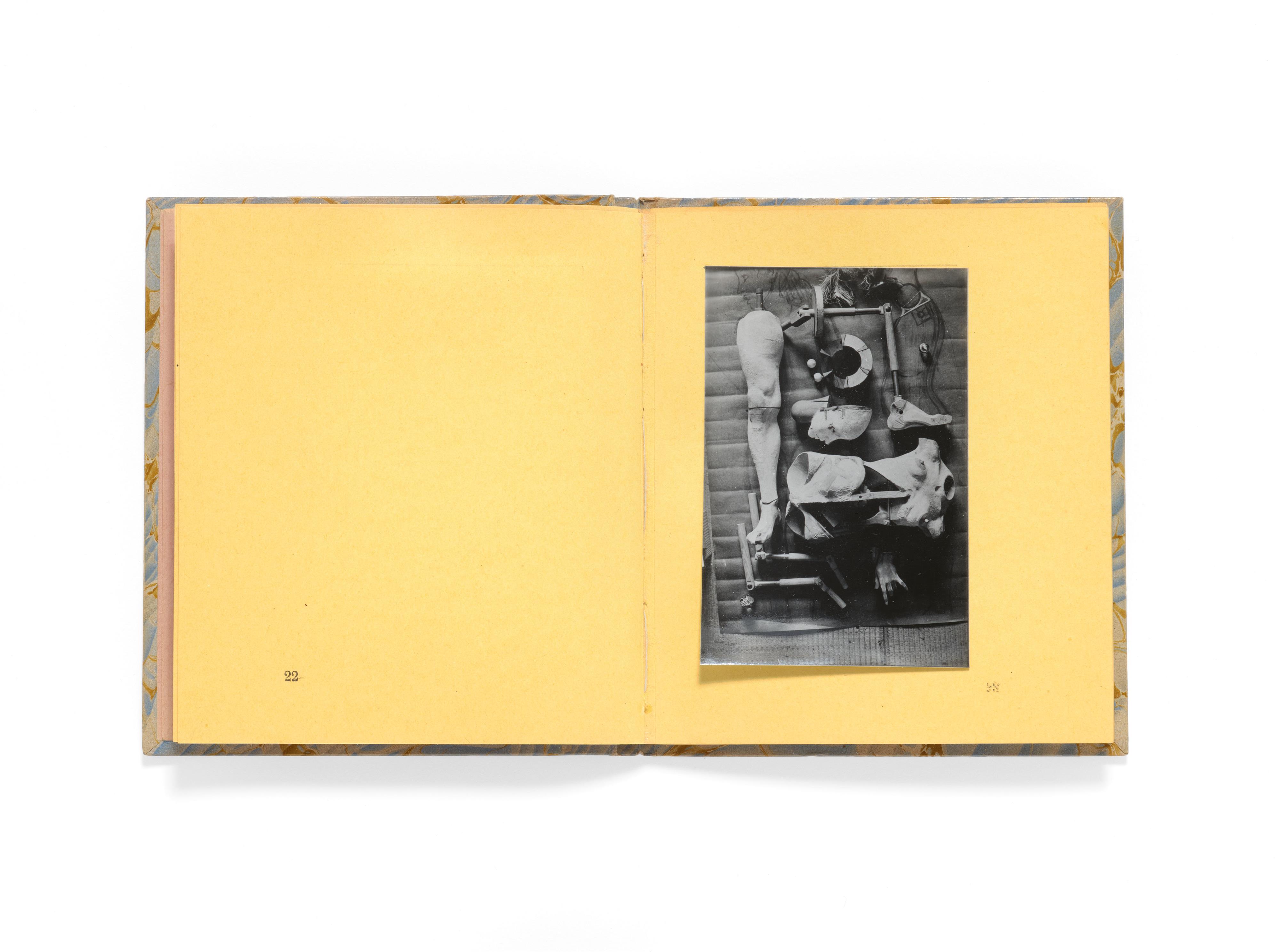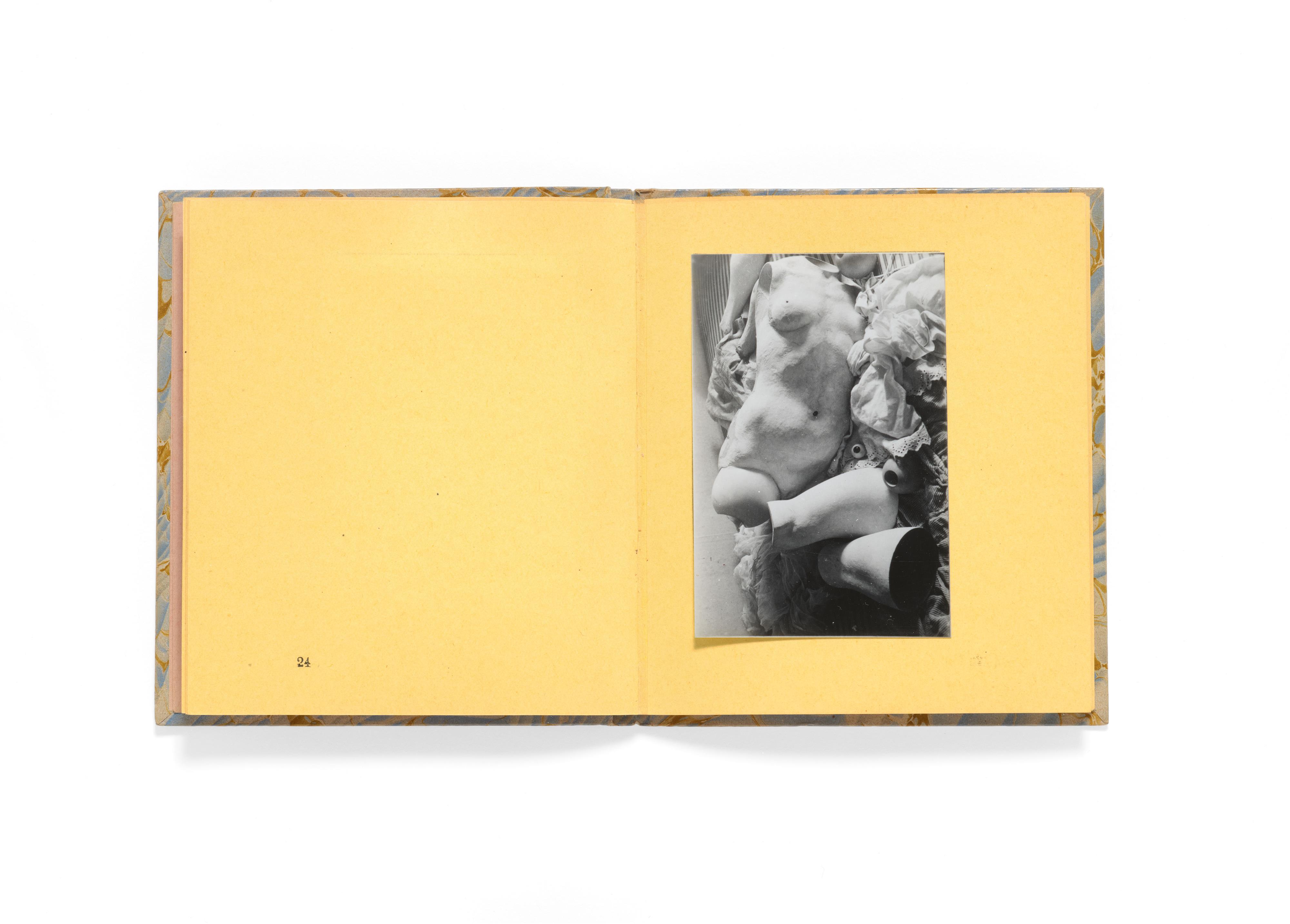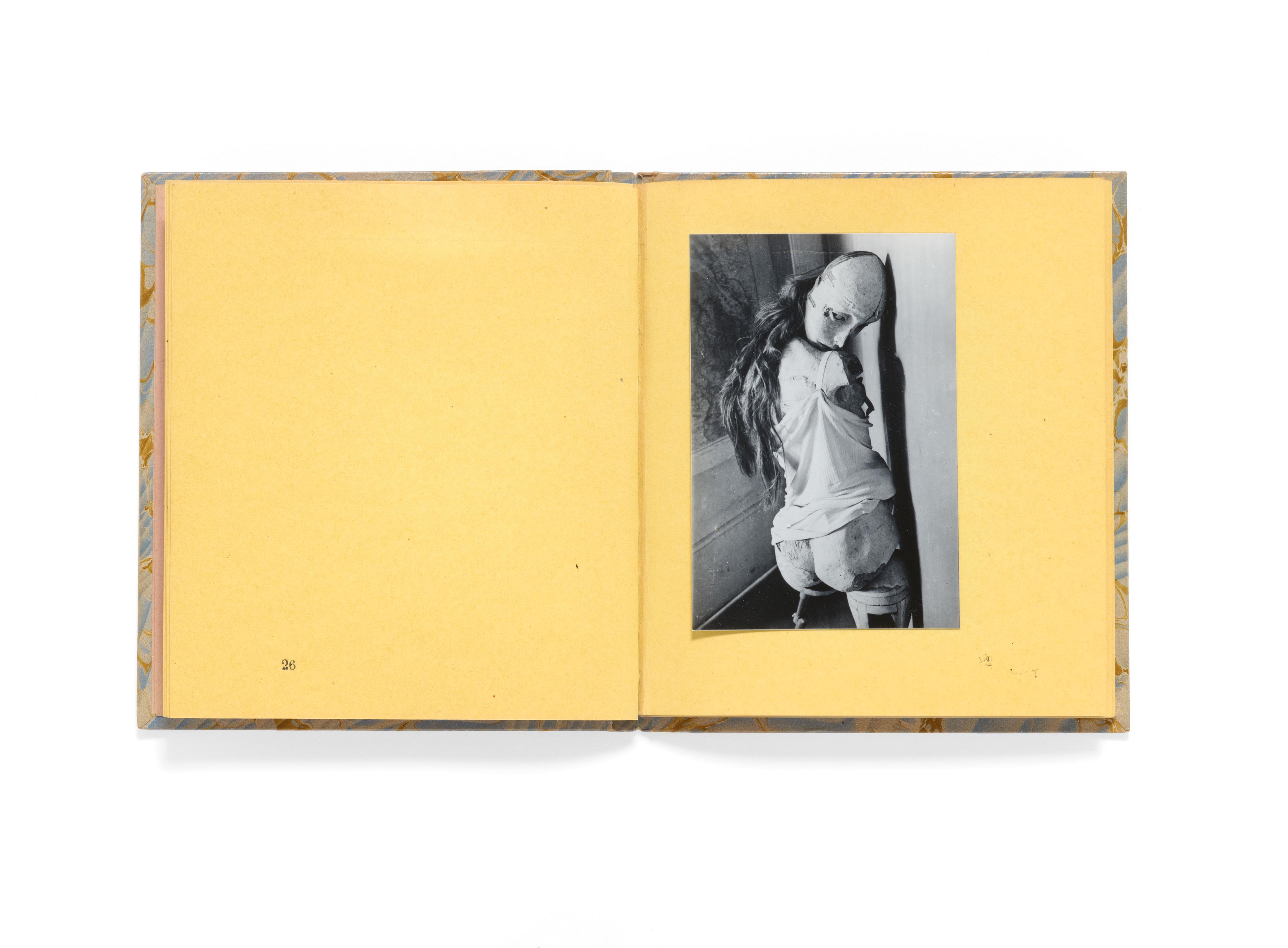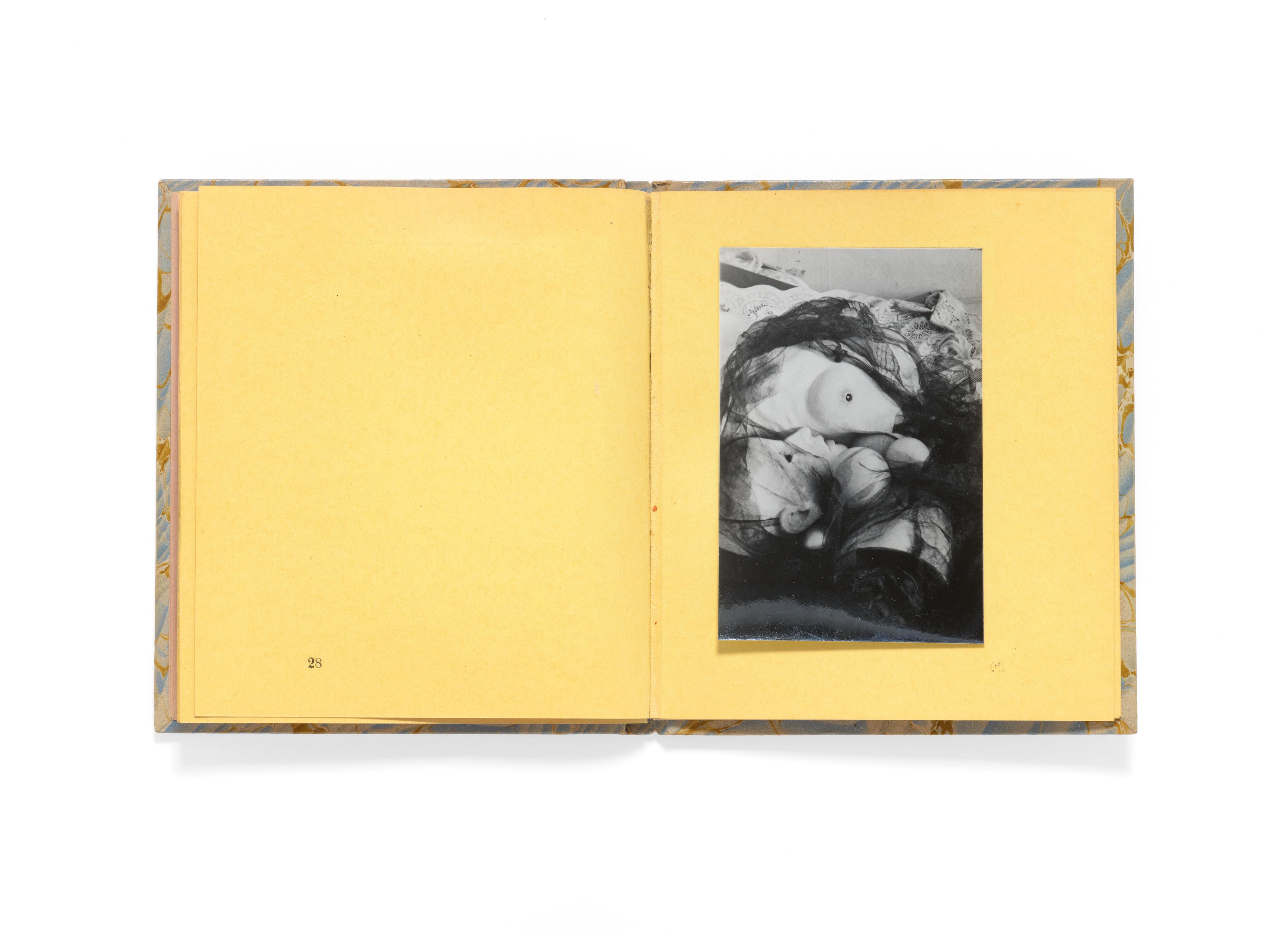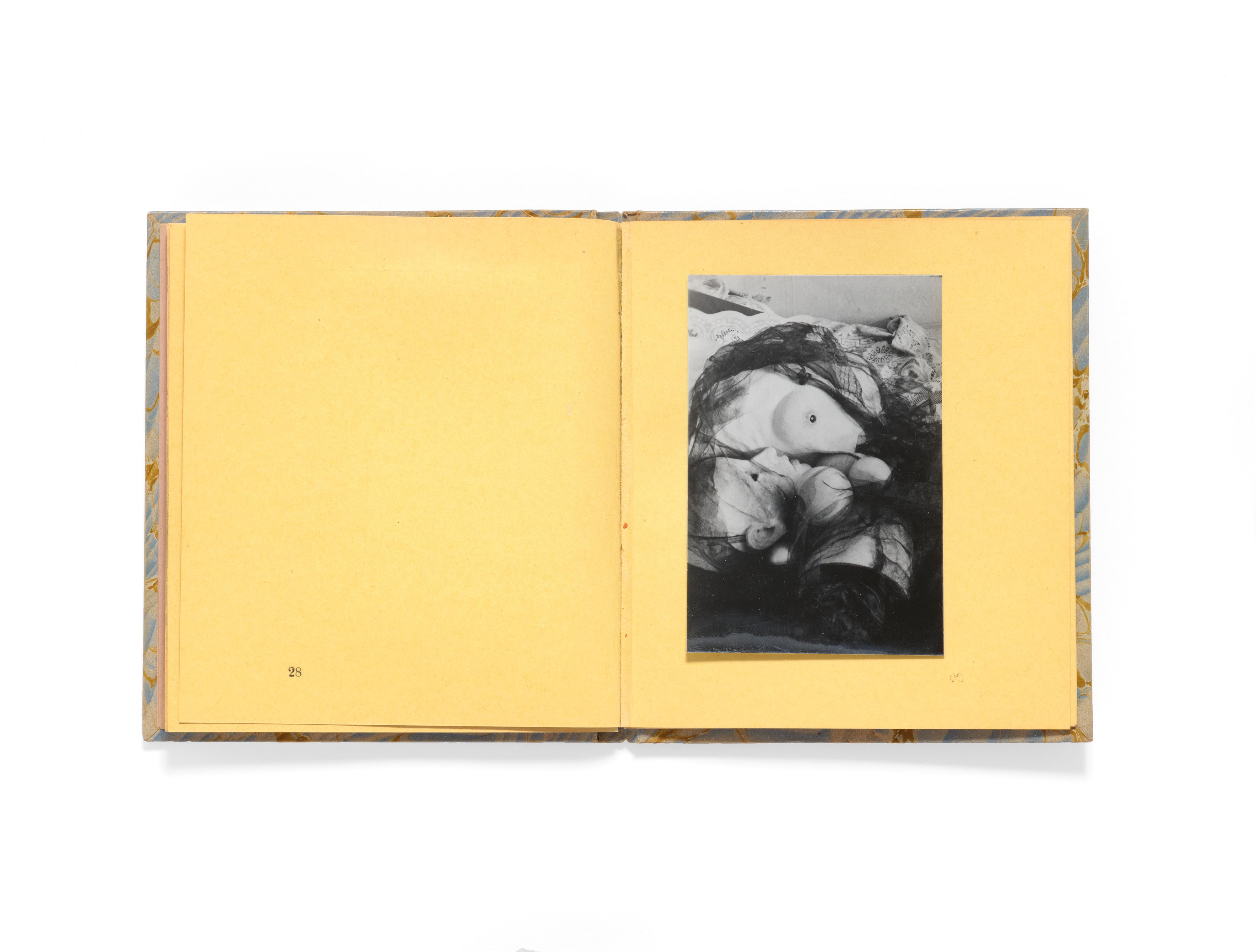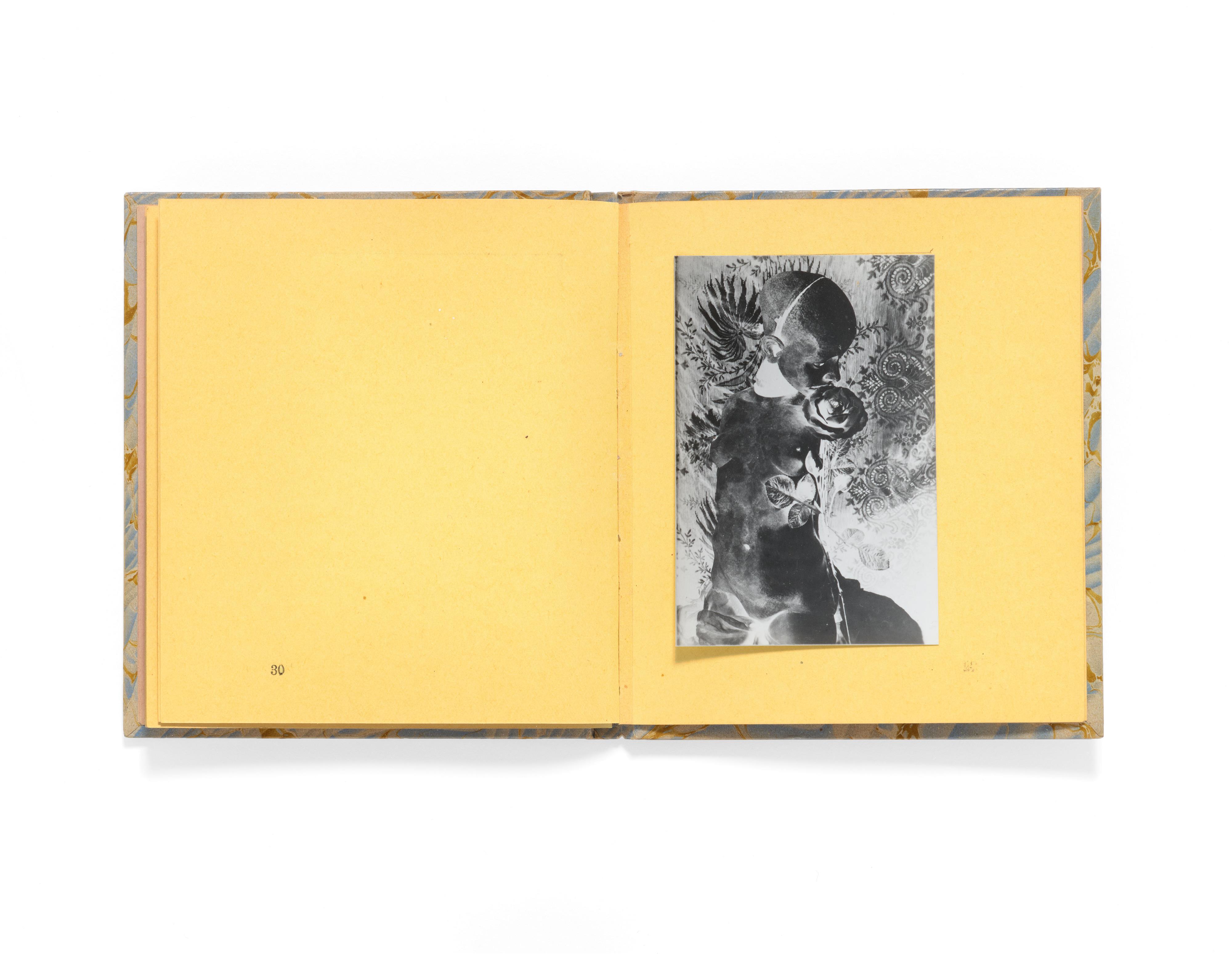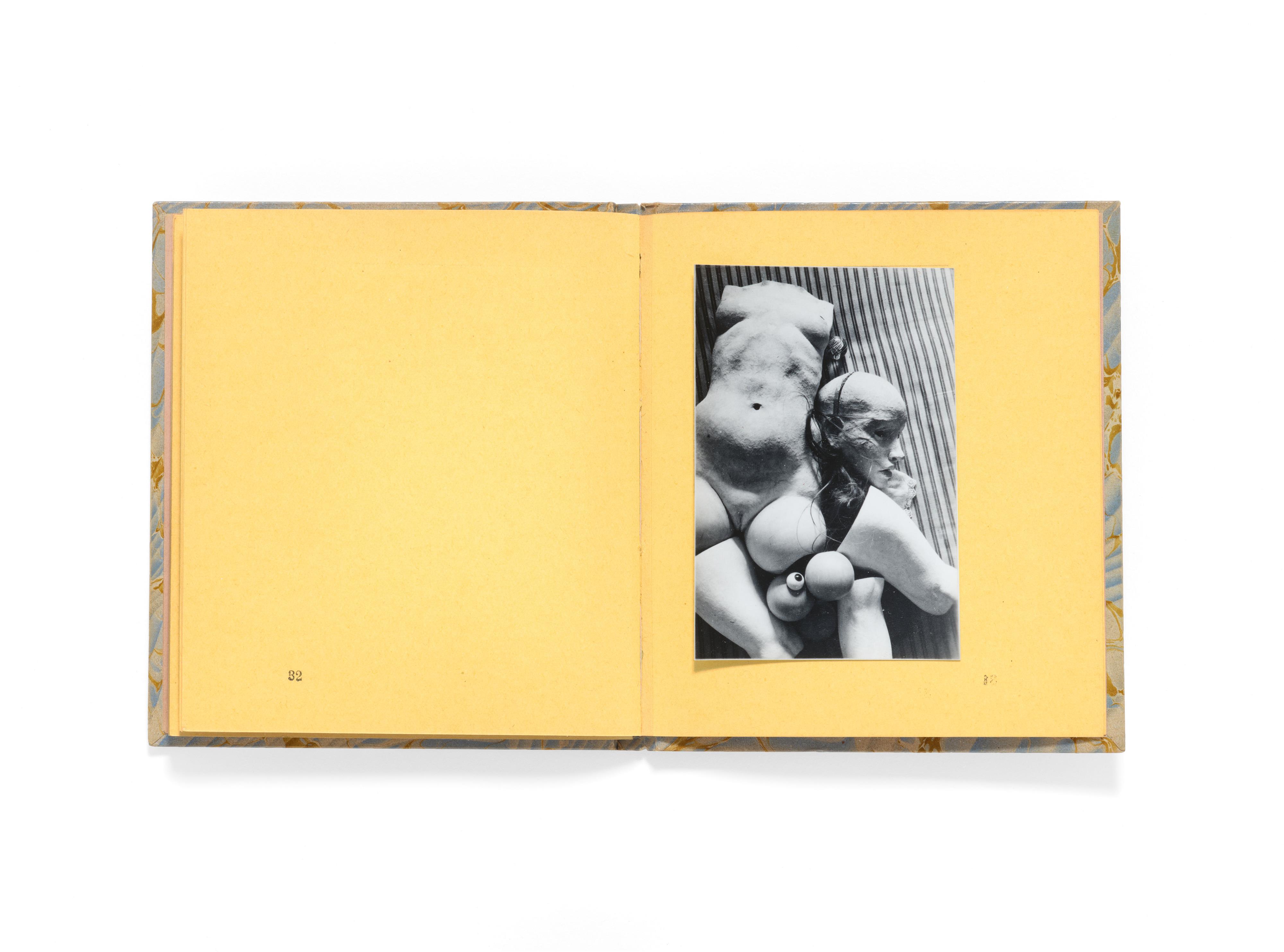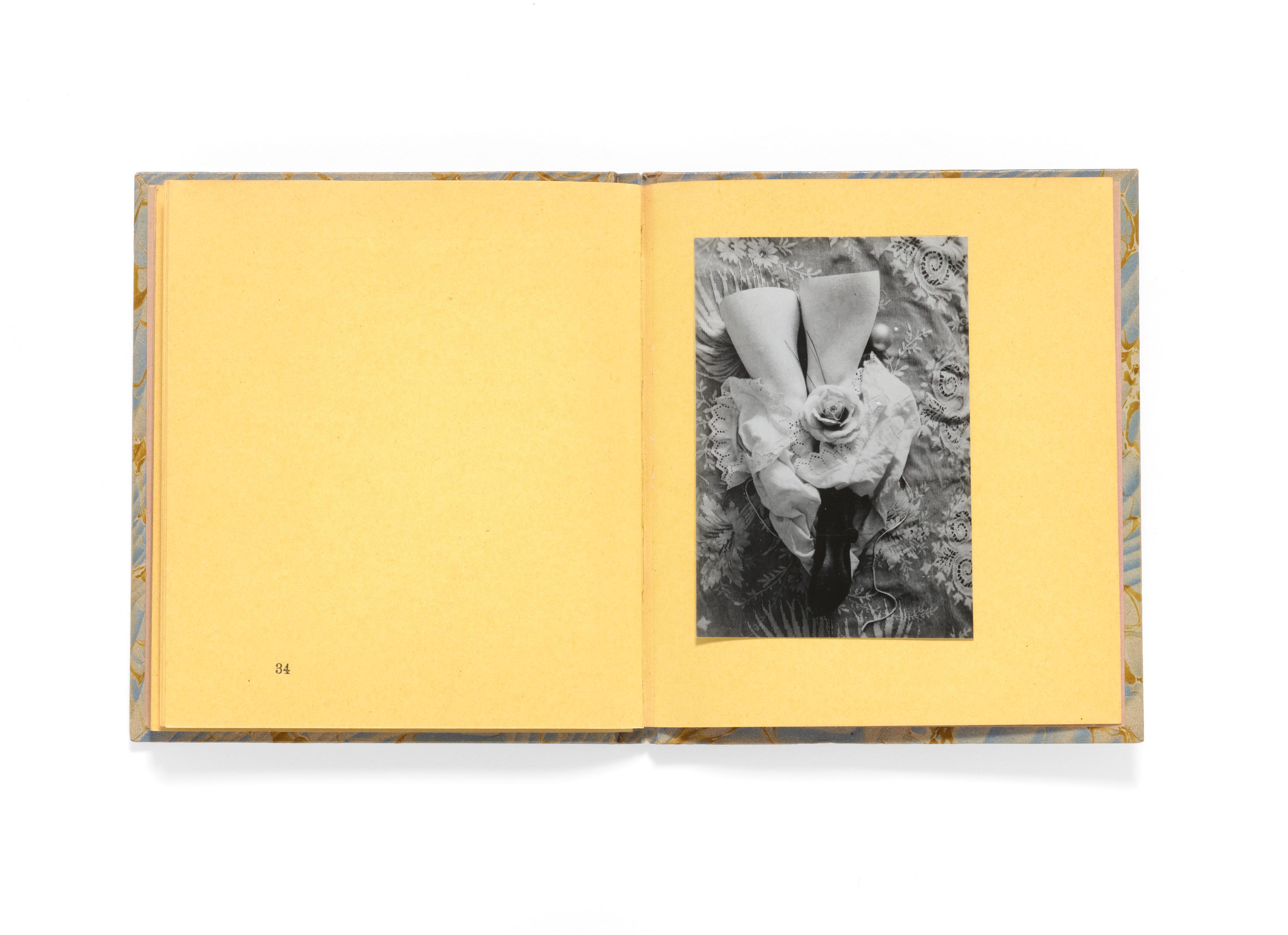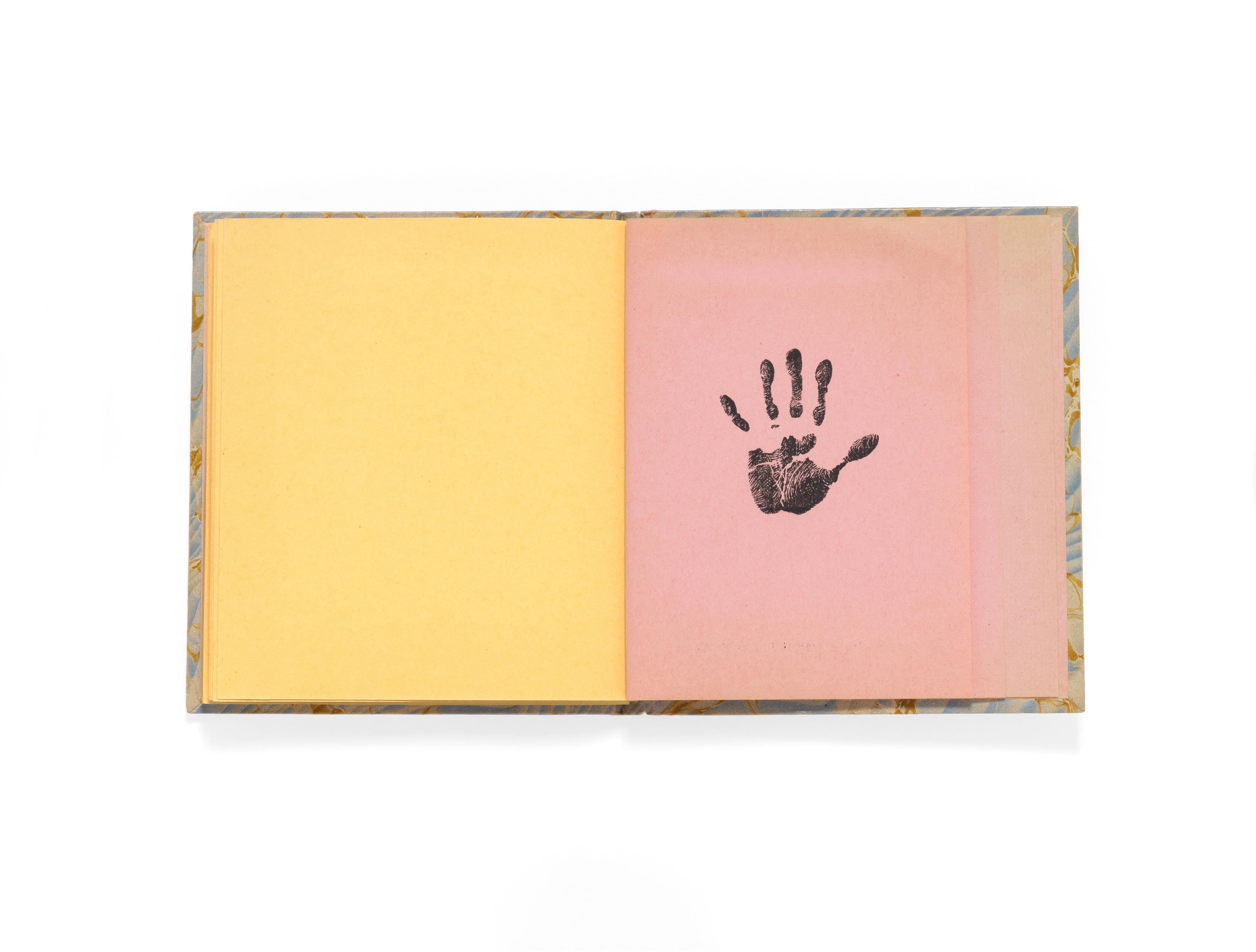Hans Bellmer
Die Puppe. Erinnerungen zum Thema Puppe
1934
Photobook containing 10 vintage ferrotyped gelatin silver prints (each approx. 5.7 x 8.6 cm), mounted to yellow cardboard with pagination on the back and a text printed on thin pink paper. Marbled hardcover binding with pink back label. 11.7 x 8.9 cm. 34 pages. Signed in pencil on the half-title. Th. Eckstein, Carlsruhe/OS.
“Was not in the doll, which only lived from that what was intuitively understood, which, despite its boundless submissiveness, knew how to be reserved for despair, was not that which the imagination sought in pleasure and enhancement to be found in the design of such doll-like quality? Did it not mean the final triumph over the young girls with their big sideways looking eyes, when the fingers, eager to attack and to form something, created slowly limb for limb, what the senses and brain had distilled? Joining joint to joint, trying out the largest turning range of the spheres for a childlike pose, gently following the hollows, tasting the pleasure of the bulges, getting lost in the cup of the outer ear, making it pretty, and, a little vindictively, also scattering the salt of the deformations. On top of that, do not stop before the inside by any means, uncover the restrained girls thoughts, so that their undergrounds become visible, best through the navel, colourfully electrically illuminated as a panorama deep in the stomach. - Shouldn’t that be the solution?”
It was with this question that Hans Bellmer finished the introductory text to his here presented book ‘Die Puppe. Erinnerungen zum Thema Puppe’, published in 1934 by Th. Eckstein in Carlsruhe/Upper Silesia. As an artist equally influenced by Dadaism and Surrealism, he describes his inner struggle with a trauma from his youth in feverish language over nine pages of text. The trigger for the described restlessness, which oscillates between sexual overexcitement, theatrical despair and aggressive vindictiveness was the obsessive affection for Bellmer’s own cousin, Ursula Naguschewski (“Ursula N.”), to whom the book is dedicated.
Bellmer’s supposedly autobiographical text concerns the frustrating experiences with the “young girls” whom he equates with “articulated dolls”. These are described as objects of desire and at the same time as participants who involve the helpless, youthful ‘first-person’ narrator - thoughtlessly or deviously - in their cruel game.
Having withdrawn from middle-class working life with the National Socialist takeover, Hans Bellmer devoted himself entirely to his obsessive art, and began work on his first doll in 1932, assisted by his technically adept brother Fritz. It is not the doll itself - a framework consisting of a wooden construction with ball-and-socket joints and peel-like rough ‘skin’ formed from layers of flax, glue and plaster – but the photographs staged with its help that constitute the artist’s actual work. By means of the photographic ‘documentation’ of the production (and disassembly) of his doll, Bellmer re-enacts the process of creation (and destruction), thus taking revenge on the figure that serves as a substitute for the shame he has suffered. An act that, as Bellmer admits at the same time, is doomed to failure.
Bellmer’s doll acquires its liveliness only through photography. “The doll, which confronts us [...] as a morbidly living creature, visualises par excellence the photographic characteristic of generating the living image of something dead. [...] With the allusion to the motif of the female corpse, the pictorial status of femininity is also exponentiated, for with rigor mortis, the body becomes a picture and thus almost challenges further pictorial representations.” (Birgit Käufer, op.cit., p. 57).
Bellmer uses various photographic approaches to bring the fictional figure to life. From the effective (portrait) photographic staging using highlights to create a chiaroscuro effect, to experimental darkroom processes, here in the form of the negative print. A self-portrait with a doll shows the photographer as a semi-transparent, blurred silhouette alongside his clearly rendered doll, which seems to turn away defensively. The photographer is almost always too close to his subject, showing only its fragments and details, partially framed by lace fabric and tulle, which makes one think of a rape or at least a shaming exposure.
A total of 28 photographs were taken on and with the “photomodel” of Bellmer’s first doll, of which he selected 10 to be presented for the first time in this book. A larger selection of 18 shots appeared that same year in a double-page spread in the December issue of the magazine ‘Minotaure’ (issue 6, 1934, pp. 30/31), a publication that caused a great sensation in France and helped Bellmer to be accepted into Parisian Surrealist circles. Trips to Paris and the participation in important group exhibitions of the Surrealists followed. Bellmer continued his work on the theme of dolls with the construction of a second doll and, after the death of his wife, left Germany for good in 1938, whereupon his art fell on fertile ground.
Well-preserved examples of this important early work of Bellmer - of which only a small edition was produced (at the artist’s own expense), a bibliophile’s gem in all its simplicity - are extremely rare and make the present edition of ‘Die Puppe’, here in the best condition, a special rarity.
Provenance
From the photographer to the father of the present owner
Literature
Carl Haenlein (ed.), Hans Bellmer. Photographien, exhib.cat. Kestner-Gesellschaft, Hannover, Berlin 1984, ill. p. 8; Birgit Käufer, Die Obsession der Puppe in der Photographie. Hans Bellmer. Pierre Molinier. Cindy Sherman, Bielefeld 2006, ill. pp. 127-130

